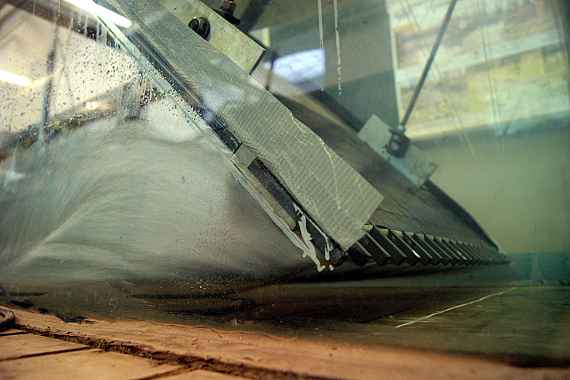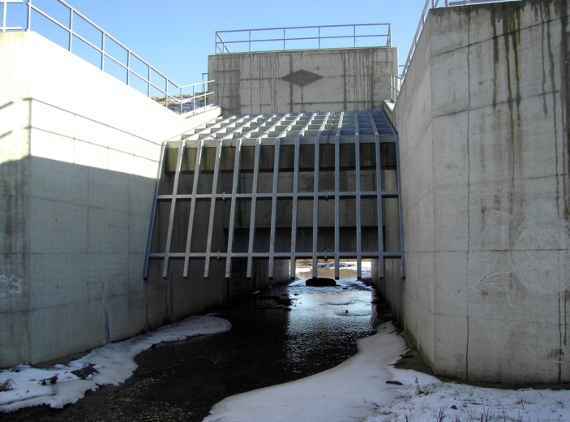The outlet structure of a retention basin is usually protected against clogging from debris by a rake. In this project a trash rake inclined against the flow was investigated in a hydraulic model test.
The rake is intended to prevent the outlet structure from being clogged by branches and tree trunks that are washed up by floods (= log jam). At the same time, however, a clogged trash rack in front of the outlet structure must be sufficiently permeable, otherwise the retention basin will fill faster than planned and thus possibly the flood storage capacity is too low.
Example of a basin outlet at a flood retention basin in southern Burgenland
The 2014 flood in Burgenland showed that the discharge capacity under the trash rack was lower than assumed in the planning for many flood retention basins. As a result, the retention basins filled up too quickly because too little water was drained off in proportion. The rakes in front of the affected outlet structures are usually inclined against the flow (see Case C) in order to retain the alluvium arriving in the event of flooding as effectively as possible. As there is no information in the literature to estimate the discharge capacity under a rake inclined against the flow, values for vertical rakes (case B) were used in practice for dimensioning the outlet structure. The project aimed to clarify whether this procedure is the cause of the insufficient discharge capacity.
Graphical representation
A model hydraulic engineering test was carried out to clarify the issue. In a 1 m wide channel with glass walls a plate was installed, which was adjustable in height and inclination and simulated a completely covert trash rake. The discharge coefficients obtained for different inclination angles and opening heights under the rake were evaluated and compared with data from the literature. The results show that the outflow under a rake inclined against the flow is reduced by the additional turbulence of the flow above the rake (see case C).
CUSTOMER: Federal Water Engineering Administration in the Province of Burgenland, Department of Water and Waste Management



